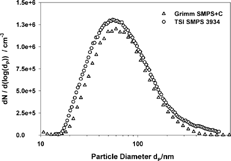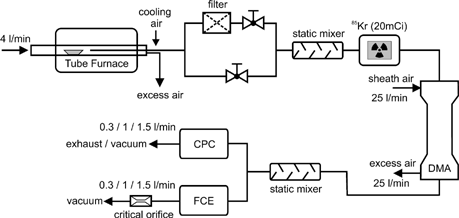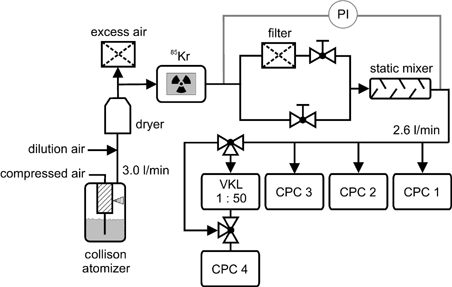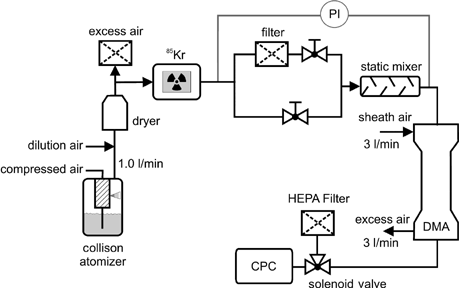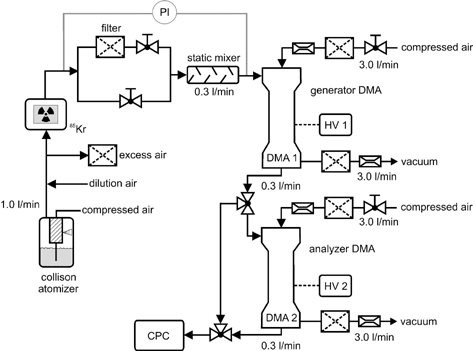Figures & data
FIG. 3 Measured counting efficiency of the TSI 3010 CPC (d 50 = 10.9 nm) together with previously published data for the same instrument.

TABLE 1 Cutoff diameters for all instruments used
FIG. 4 Counting efficiency for NaCl particles for different commercial CPCs. The two measurements for the Grimm 5.403 CPC were taken two years apart. The TSI 3010 CPC used by CitationRussell et al. (1996) was operated with a higher temperature difference of 25 K between saturator and condenser.
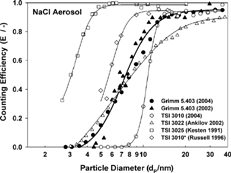
FIG. 6 Results of the concentration comparisons in the single-particle count mode. All concentrations below 104 cm−3.
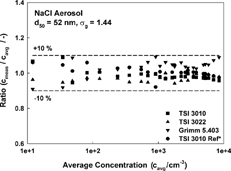
FIG. 7 Results of the concentration comparisons against a reference concentration calculated from the concentration measured by a TSI 3010 CPC in the single-particle count mode behind an injector diluter.

FIG. 9 Time responses of the Grimm 5.403 CPC (the initial dead time is not shown) for a concentration step for three different starting concentrations N0, neglecting the coincidence effect.
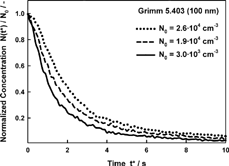
FIG. 10 Time response of the Grimm 5.403 CPC for a concentration step. The response can be approximated by a combination of the response for a PFR and an LFR, and it is described in EquationEquation (2).
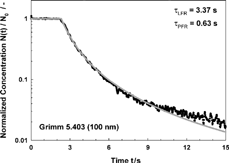
FIG. 11 Comparison of the step response of the Grimm 5.403, the TSI 3022 and the TSI 3010 CPCs. The solid lines represent fits according to EquationEquation (3) based on the parameters given in .

TABLE 2 Parameters to describe the time response of three CPCs for a particle size of 100 nm according to EquationEquation (3)
FIG. 13 Tandem signals for both Grimm 5.4-900 DMAs examined, downstream of a short Vienna DMA at a selected particle size of 52 nm.

FIG. 14 Height of the transfer function of the Grimm 5.4–900 DMA as function of the particle diameter. The solid line represents a fit to the measurement data.
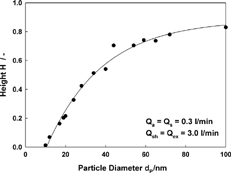
FIG. 15 Area of the transfer function of the Grimm 5.4–900 DMA as function of the particle diameter. The solid line represents a fit to the measurement data.
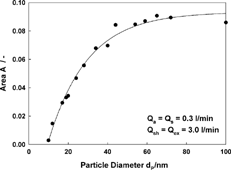
FIG. 16 Full width at half maximum of the Grimm 5.4–900 DMA as function of the particle diameter. The solid line represents a fit to the measurement data.
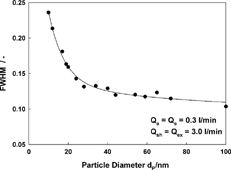
FIG. 17 Comparison between loss-corrected tandem measurements (loss correction: EquationEquation (6)) for the Grimm 5.4–900 DMA and simulated tandem signals based on Stolzenburg's diffusion-broadened transfer function for three different particle sizes and a flow rate of 0.3 l/min to 3.0 l/min.
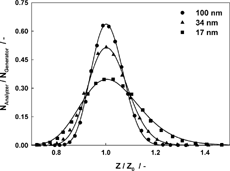
FIG. 18 Size distribution of a NaCl Aerosol measured with the Grimm EMS system and the TSI SMPS model 3934.
